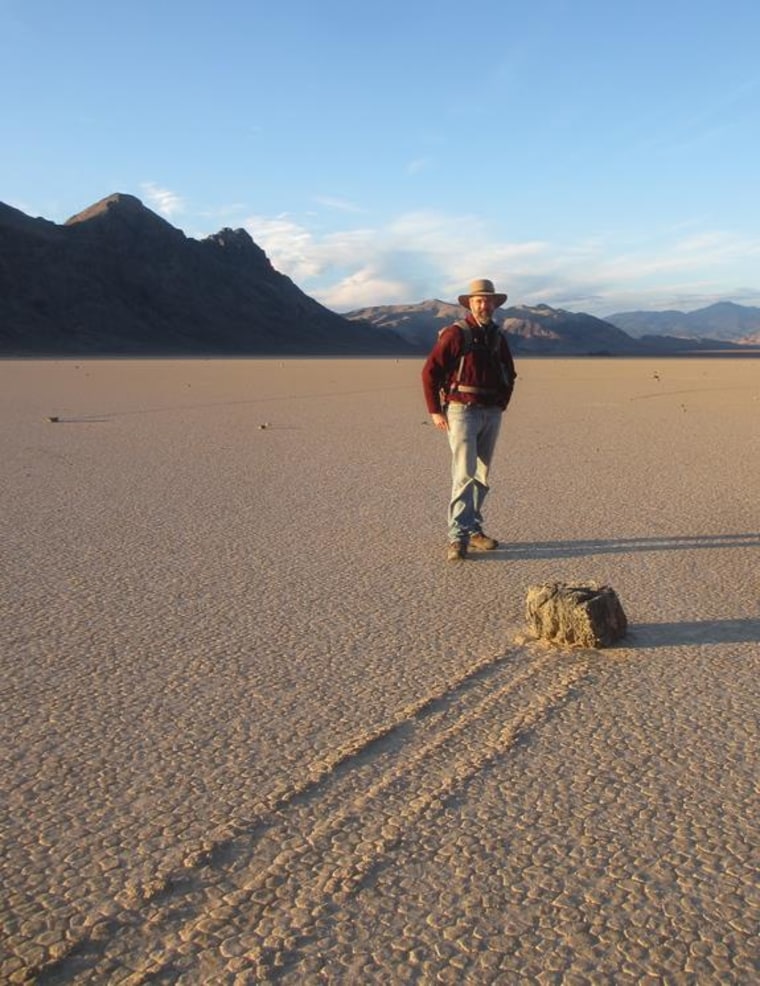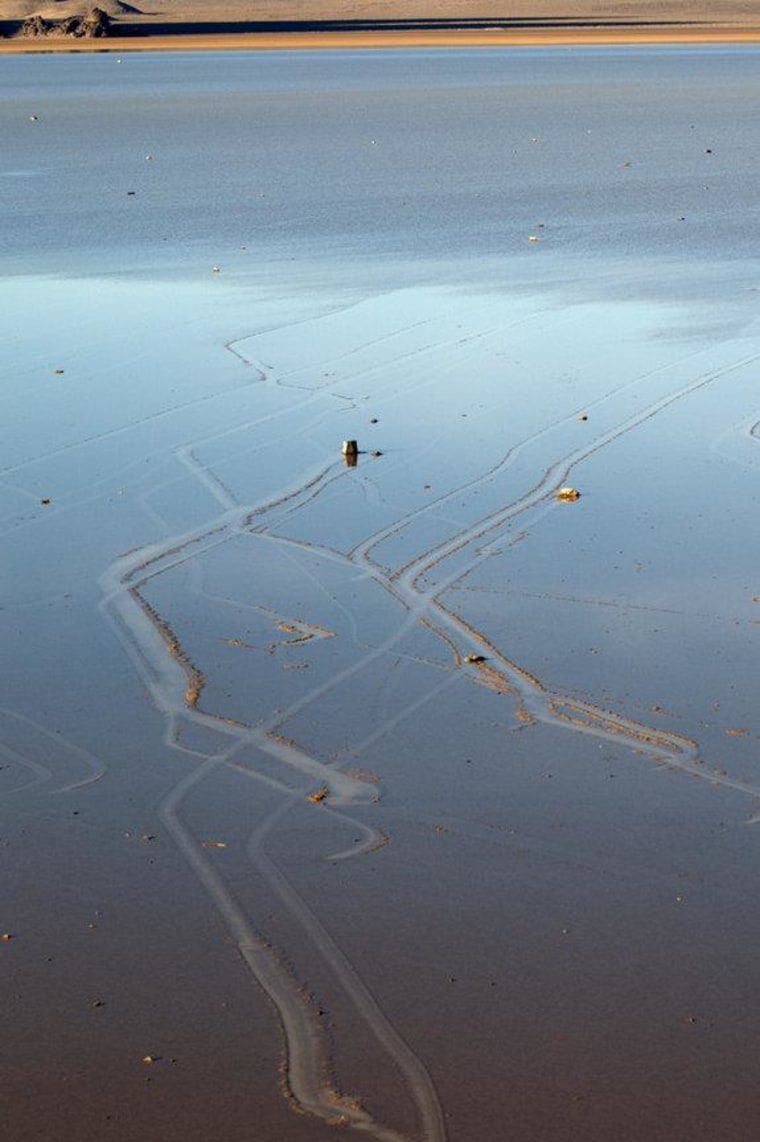The first witnesses to an enduring natural mystery are an engineer, a biologist and a planetary scientist who met thanks to a remote weather station.
This odd group has captured the first video footage of Death Valley's sailing stones creeping across Racetrack Playa. For a century, these eerie rocks and their long, graceful trails have stumped visitors and scientists. The boulders of black dolomite appear to move on their own, sliding uphill across the playa's flat lakebed. The trails are the only evidence the rocks move. No one has ever seen them set sail. [Video: Sailing Stones of Death Valley Seen in Action]
Lacking direct evidence, explanations for this geologic puzzle ran the gamut, from Earth's magnetic field to gale-force winds to slippery algae. Now, with video, time-lapse photographs and GPS tracking of Racetrack Playa's moving rocks, the mystery has finally been solved.
Jagged plates of thin ice, resembling panels of broken glass, bulldoze the rocks across the flooded playa, the scientists reveal today (Aug. 27) in the journal PLOS One. Driven by gentle winds, the rocks seem to hydroplane atop the fluffy, wet mud.
"It's a wonderful Goldilocks phenomenon," said lead study author Richard Norris. "Ponds like this are vanishingly rare in Death Valley, and it may be a decade between heavy enough rain or snowfall events to make a substantial pond," said Norris, a paleobiologist at the Scripps Institution of Oceanography in San Diego, California.

Leading theories had already narrowed in on wind, water and ice to propel the playa's rocks. But no one has come up with thin ice before. Models always targeted thick ice sheets, which could float the rocks across the playa like wind-driven icebergs. The ice seen during the study is too thin to pick up anything but pebbles.
"I have to confess I was surprised," said study co-author Ralph Lorenz, who has authored several studies suggesting thick ice carries the playa rocks. "I really expected buoyancy to be required, and it clearly wasn't. The ice was thinner than I thought would be needed. It was amazing to see the process actually happen," said Lorenz, a planetary scientist at the Applied Physics Laboratory at Johns Hopkins University in Baltimore.
— Becky Oskin, LiveScience
This is a condensed version of a report from LiveScience. Read the full report. Email Becky Oskin or follow her @beckyoskin. Follow us @livescience, Facebook & Google+.
